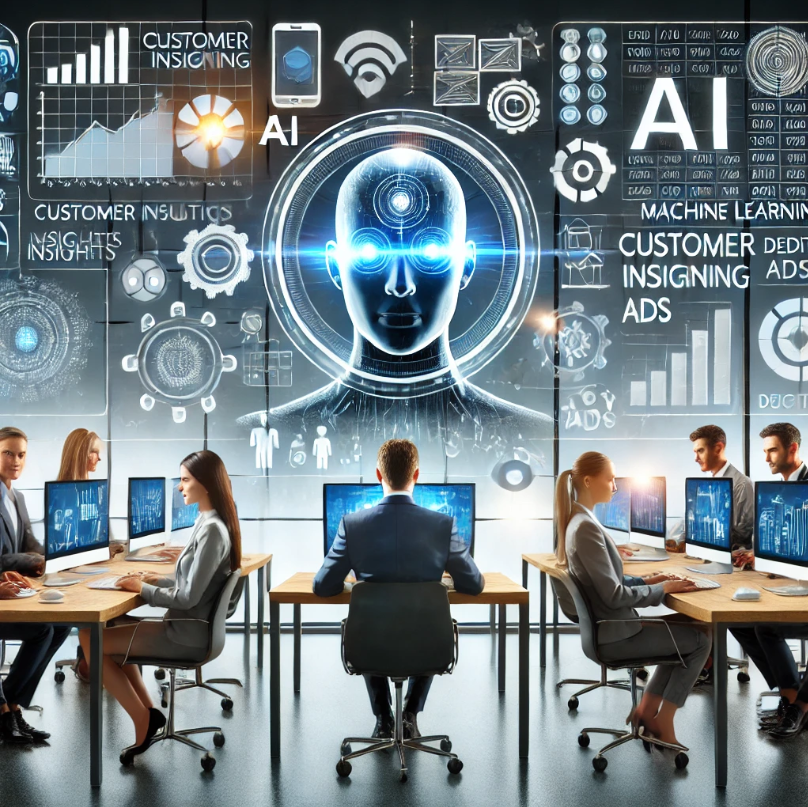
Of all a company’s functions, marketing has perhaps the most to gain from artificial intelligence (AI). AI significantly enhances marketing’s core activities: understanding customer needs, matching them to products and services, and persuading people to buy. According to a 2018 McKinsey analysis of more than 400 advanced use cases, marketing was identified as the domain where AI would contribute the greatest value.
Chief marketing officers (CMOs) are increasingly embracing AI technology. An August 2019 survey by the American Marketing Association revealed a 27% increase in AI implementation over the previous 18 months. Furthermore, a 2020 Deloitte global survey of early AI adopters showed that three of the top five AI objectives were marketing-oriented: enhancing existing products and services, creating new products and services, and improving customer relationships.
The Evolution and Impact of AI in Marketing
AI has already made significant inroads in marketing, and its role is expected to grow even larger in the coming years. Given the technology’s enormous potential, it’s crucial for CMOs to understand the current AI applications in marketing and how they may evolve. Drawing on more than a decade of experience in data analytics, AI, and marketing, we’ve developed a framework to help CMOs classify existing AI projects and plan future rollouts. Before diving into the framework, let’s examine the current state of AI in marketing.
Today’s AI Landscape
Many firms now use AI to handle specific tasks such as digital ad placement (programmatic buying), enhancing sales forecasts, and augmenting customer service efforts. AI supports a range of activities throughout the customer journey, from targeting ads during the consideration phase to personalizing offers and reducing cart abandonment.
For instance, Wayfair uses AI to determine which customers are most likely to be persuadable based on their browsing history. AI-enabled bots from companies like Vee24 can help marketers understand customer needs, guide their searches, and connect them to human sales agents through various channels.
AI also streamlines the sales process by leveraging detailed data, including real-time geolocation, to create highly personalized offers. This capability extends to upselling and cross-selling, with AI bots providing motivational testimonials to close sales. For example, after a customer fills a cart, AI might display a message like “Great purchase! James from Vermont bought the same mattress,” significantly increasing conversion rates.
Post-sale, AI-enabled service agents from firms like Amelia and Interactions offer 24/7 customer support, efficiently handling queries and escalating complex issues to human agents when necessary. AI assists human reps by analyzing customer tone and suggesting appropriate responses, enhancing overall customer satisfaction.
The AI Framework for Marketing
Marketing AI can be categorized based on two dimensions: intelligence level and whether it’s stand-alone or part of a broader platform. These categories include task automation and machine learning, both of which can be stand-alone or integrated into existing systems.
Types of AI in Marketing:
- Task Automation:
- These applications perform repetitive, structured tasks with low intelligence. Examples include automated welcome emails and basic chatbots that follow decision trees.
- Machine Learning:
- These algorithms use large datasets to make complex predictions and decisions. Applications include programmatic ad buying, recommendation engines, and sales propensity models in CRM systems.
Stand-Alone vs. Integrated AI:
- Stand-Alone Applications:
- These isolated AI programs operate separately from primary customer or employee interaction channels. For example, Behr’s color-discovery app uses IBM Watson to recommend paint colors based on desired moods.
- Integrated Applications:
- Embedded within existing systems, these AI applications seamlessly enhance user experiences. Examples include Netflix’s recommendation engine and Salesforce’s AI-based lead scoring.
Combining these dimensions results in four quadrants: stand-alone machine-learning apps, integrated machine-learning apps, stand-alone task-automation apps, and integrated task-automation apps. Understanding these quadrants helps marketers plan and sequence AI implementation effectively.
A Strategic Approach to AI in Marketing
Marketers should aim to develop integrated machine-learning applications, although simple task automation systems can enhance structured processes and offer commercial returns. A hybrid approach that combines task automation with machine learning can extract key data, make complex decisions, and personalize communications.
Getting Started with AI:
- Begin with Rule-Based Applications:
- For firms new to AI, starting with simple rule-based applications is advisable. Examples include stand-alone task-automation apps that assist human agents in customer interactions.
- Transition to Machine Learning:
- As companies gain AI skills and accumulate customer data, they can move from task automation to machine learning. Stitch Fix’s AI, which curates clothing selections based on customer preferences and feedback, is a notable example.
- Leverage New Data Sources:
- Marketers should continually seek new data sources, such as internal transactions and external suppliers, to enhance AI models. XO’s machine-learning-based pricing model, which increased its EBITDA by 5%, utilized public data on private jet supply and demand factors.
The Future of AI in Marketing
As companies become more sophisticated in their use of AI, many will fully automate certain decisions, removing human involvement in repetitive, high-speed tasks. In other areas, AI will provide recommendations, leaving critical decisions to humans. The greatest returns from AI will be found in more-automated decisions.
Challenges and Risks:
Implementing AI can be challenging, requiring careful integration of human and machine tasks. Companies must ensure AI augments human skills without creating problems. Privacy, security, and data ownership concerns must also be addressed transparently to maintain customer trust.
Conclusion:
Marketing AI holds enormous promise, offering substantial benefits and transforming marketing functions. While AI can currently handle only narrow tasks, its capabilities are rapidly growing. Marketers should start developing strategies today to leverage AI’s potential and address any associated risks, ensuring a successful and innovative future.
Discover the transformative power of AI in marketing with Marketbotics. Our latest insights reveal how AI enhances customer understanding, product matching, and persuasive capabilities, driving significant value. Explore AI trends and strategies for your marketing success. For more information, visit Marketbotics.

 +44 20 3769 3722
+44 20 3769 3722 